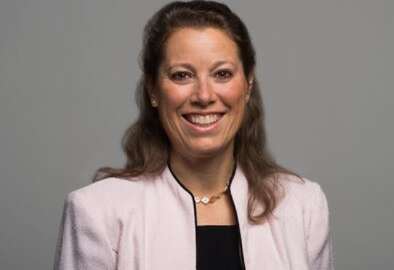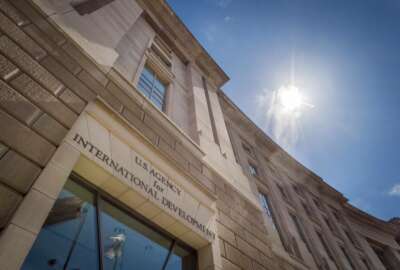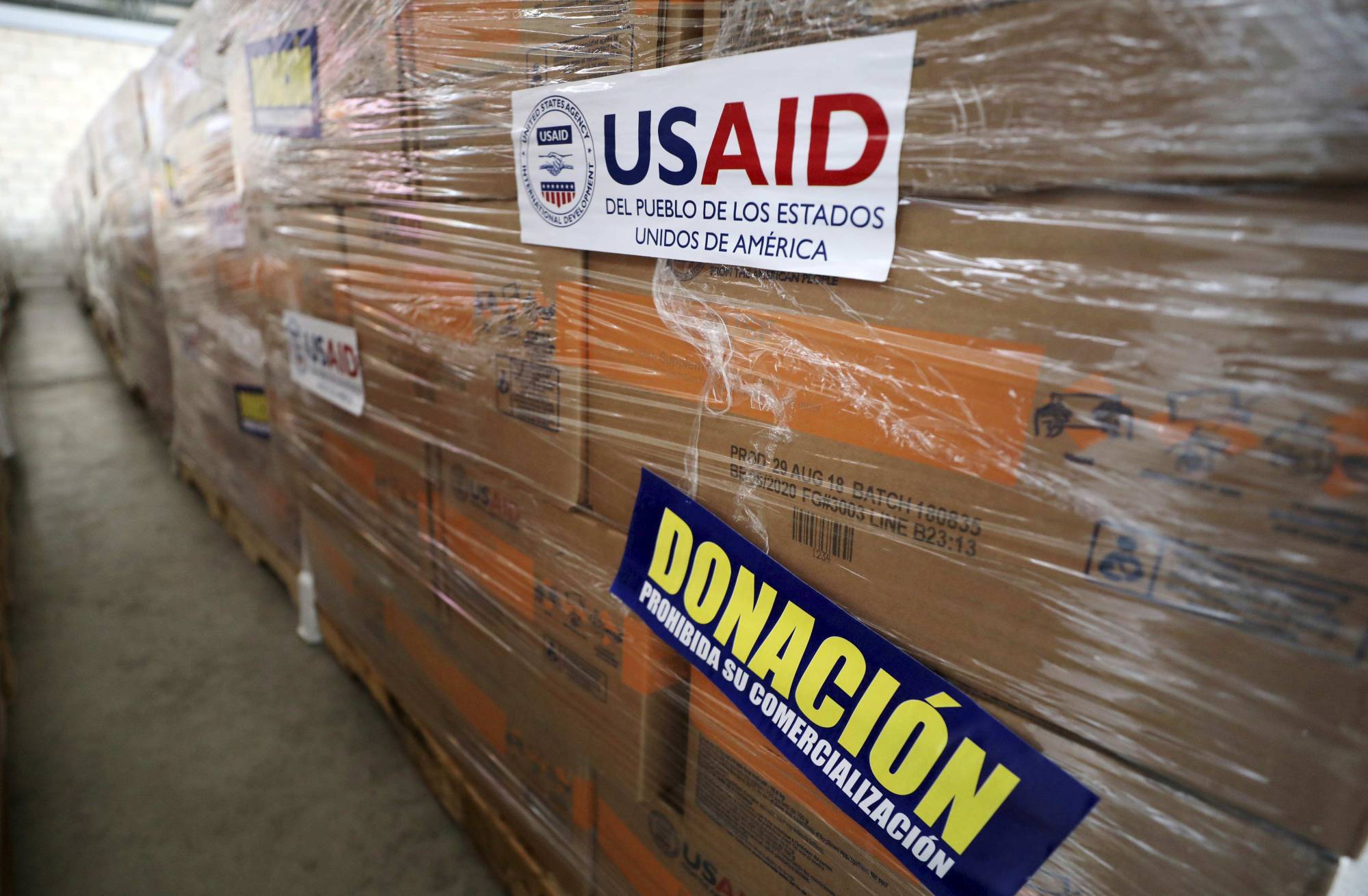USAID’s first DEI director starting with demographic data for recruits, promotions
The U.S. Agency for International Development has started up a new office called diversity, equity, inclusion and accessibility.
Best listening experience is on Chrome, Firefox or Safari. Subscribe to Federal Drive’s daily audio interviews on Apple Podcasts or PodcastOne.
The U.S. Agency for International Development has started up a new office called diversity, equity, inclusion and accessibility. And it’s hired someone to run that new office. Neneh Diallo joined the Federal Drive with Tom Temin to share more.
Interview transcript:
Tom Temin: Ms. Diallo, good to have you on.
Neneh Diallo: Good morning, Tom, thank you so much for having me.
Tom Temin: All right, so you are the director for diversity, equity and inclusion and accessibility. I’m just gonna ask a basic question: What do you actually do in that job?
Neneh Diallo: Well, that’s a great question. First off, I’m the first chief diversity officer at USAID. It is a commitment that USAID Administrator Samantha Power has, as President Biden and Vice President Kamala Harris has prioritized DEIA through the federal workforce. And Administrator Power has prioritized DEIA since her first day in the office, when she signed and approved USAID’s DEIA strategic plan. And since that day, Administrator Power has continued to emphasize the importance of increasing diversity, ensuring equity and improving inclusion and expanding accessibility, while also working to create the workplace free from discrimination, harassment and retaliation. As USAID’s chief diversity officer, I’m similarly committed to upholding USAID’s core values, which includes promoting integrity, respect, and inclusion, all that we do to support USAID’s critical and life-saving mission around the world. At USAID we believe in integrating DEIA across our workforce and operations. And it’s not simply because it’s the right thing to do. It’s because we do believe that the research backs us up, and it’s smart for us to do. It helps us be better engaged with and empower the diverse communities which we serve around the world. So with that said, being in this role, this office, it’s like a startup, building a team, and truly engaging the workforce from our partners across the agency. And it’s about making sure that it’s not just diversity in terms of looking at our workforce, but also looking at our programs and how we engage with our partners in the countries in which we work. My immediate goals for this next year will be to look at the data. I believe in taking an evidence-based approach to seeing where the data is in terms of how we can reduce potential barriers that could be there in our hiring, our promotion and our professional development, in diversifying our workforce, through the ranks, which includes recruitment and promotions, and then also creating access for minority- and women-owned businesses to partner with USAID.
Tom Temin: Sure. Well, let me just get back to that idea of hiring because legally, and for many years now, it has been illegal to make discriminatory decisions for or against, really, on the basis of race and a number of other factors. So give us a sense of the measure of success. What’s the metric here to know that the work you’re doing has some effect on, say, the intake of people? That’s only one aspect of it. And then there’s also the promotion and access to bigger and better jobs as time goes on for everyone.
Neneh Diallo: That’s the million-dollar question on “how,” and let’s be honest here, this is not going to change overnight, which is why I say, we have to look at the data and to see what the story is telling us. So this is going to take us working across the agency, me working with our HR partners to determine what is our recruitment strategy? Where are the promotions, who’s being promoted, who’s coming into the organization, and I do know that there’s a concerted effort to reach out to minority-serving institutions, which works with HBCUs or Hispanic-serving institutions and the like to bring in staff. But sometimes when you look at those numbers, it’s bringing in junior staff, and that might, I guess, bringing in people of color at a certain level. And then it’s, where did they go from there in terms of their promotion potential? So the work that I’m charged to do is to say, okay, let’s look across the levels at USAID, let’s see what our percentages are at, we’re looking at the entire demographic, and then working conservatively, with intention, again, with our HR partners, and across the agency to see how we can do a better job in terms of our recruitment efforts to make sure that there is equity across. There is no concrete answer right now to say that, here’s a magic bullet to solve it. But I think that the passion and integrity that I’ve seen thus far in my short time here is seeing that people do want to see a change and do want to see us move in the right direction.
Tom Temin: Because one of the intractable problems that the government knows it has, and I’ve heard it now for probably 25 or 30 years of covering this, and that is that the percentage, whatever it might be of a given ethnic group in the general workforce, does not map over into the senior ranks. So that there seems to be some kind of, nobody knows what the cause is, but whenever say the proportion of Blacks in the federal workforce as a whole might be what you would expect, but the number of Blacks in senior executive ranks or in upper level ranks, does not hold. And that’s something I think that a lot of agencies feel has to be fixed but nobody really knows how to go about doing it.
Neneh Diallo: You’re absolutely right. And we’re very transparent about that as well that we can do better and should do better. And again, like I said, it would take really reaching across the aisles, and everybody’s sitting down and looking at how can we be intentional about making sure that we are recruiting at all levels and including in the senior levels to make sure that we are recruiting a diverse staff. It’s going to take having hard conversations. It’s not easy, it’s not going to be changed overnight. But like I said, I’ve been met with the most passionate staff that I’ve seen across demographics, white males, white females, African Americans, Asians, and the Latinx community here at USAID are committed to making sure that we can see that equity across USAID’s recruitment and hiring.
Tom Temin: We’re speaking with Neneh Diallo, she is the director of diversity, equity, inclusion and accessibility at the U.S. Agency for International Development. And from a programmatic standpoint, how big will your office be? Do you expect to have 10, 20, 30 people? And will they be located throughout the world as USAID itself is or how do you envision this all functioning?
Neneh Diallo: I have a current small team of six people, but we’re looking really to grow that to probably about 15 or so. And it’ll be working across three different divisions: people workplace and culture. That really works with our DEIA councils, which are based here in Washington, D.C., and also in several missions across the world. Then we also have our training events and outreach division that conducts all of our inclusion and leadership trainings here. And then our third division will be the development programming, which will look at ensuring that the agency stays committed and accountable to the equity action plans that were issued by the executive orders by President Biden, and then also working across the agency on coordinating our efforts on our minority-serving institutions outreach, which is partnering with HBCUs and Hispanic learning institutions, etc.
Tom Temin: And in your experience, do you feel the government is a little ahead of, a little behind of, or about equal with industry with respect to making sure that there is diversity, equity, inclusion, and accessibility?
Neneh Diallo: Actually, without really knowing the details of what the private sector is doing, I’m actually very, very impressed with where the federal agencies are right now. I’m not sure if you’re aware, but federal agencies publicly released their equity actions plans. On the first day of the Biden-Harris administration, the White House issued an executive order that was focused on advancing racial equity and support for underserved communities through the federal government. And the order served as recognition that one of our greatest strengths as a nation is in our diversity. And that in order to pursue this comprehensive approach to advancing equity for all people, it directed all federal agencies to conduct an equity assessment and then to use those findings to develop an equity action plan. And the Domestic Policy Council, which is part of the White House led by Dr. Susan Rice held an event where federal agencies launched their plans. And you can find USAID’s plan on our website at www.USAID.gov/equity, where you will see our assessment, what our recommendations are and how we’re going to address it. So I would say that the administration and/or federal government right now is moving at lightning speed to address this, because I think they see the urgency in ensuring that we break down the barriers that have been holding underrepresented groups back for years.
Tom Temin: And what’s the very first thing USAID will do in its plan?
Neneh Diallo: So the first thing that we’re going to be doing is we’re going to continue developing work with USAID.org, which is a website that is going to help welcome new and underrepresented partners work with USAID. We’re going to enhance the implementation of our nondiscrimination policy for beneficiaries, or we’re going to reduce the internal and external barriers to securing USAID Awards, which includes the reduction of the administrative burdens that a lot of them have experienced, which has prevented them from being able to win awards with us. And then we’re going to hopefully designate inclusive development advisers at each mission, and then implement a consistent approach to incorporate racial, ethnic and diversity into our policy planning and learning.
Tom Temin: And while we have you, tell us a little bit about yourself and how you came to this job.
Neneh Diallo: My own experience was both in the public and private sectors, and it’s really led me to appreciate the importance of embedding DEIA in everything that we do. As the Millennium Challenge Corporation’s diversity and inclusion lead, I helped us align the the DEIA goals against the agency’s strategic framework and human capital strategy. I also implemented a range of DEIA training for staff and leadership and after leaving them Millennium Challenge Corporation, which is another federal government agency, I also served as the senior vice president for Marketing Communications at pocstock, which is a global Black-owned media platform focused on increasing representation and diversity in stock media. In that role, I push for greater representation for people of color and communities across a range of communications channels. And I really truly understand that the role that we play here and in this role as USAID’s first chief diversity officer, that we have to make sure that in the work that we do in the international development space is not taken for granted. That we should not take for granted that because we work in this space, that there must not be bias that there must be equity and inclusion by the mere fact of the work that we do. But sometimes that’s where the most egregious offenses happen. And I’m just really proud to see and be part of an agency that truly, truly believes that DEIA must be embedded in everything that we do. And I’m really proud of what USAID has accomplished so far, and it really reflects the commitment of the leaders across the entire agency and at every level. I’m really looking forward to partnering with everybody and moving this forward.
Tom Temin: Neneh Diallo is the director of diversity, equity, inclusion and accessibility at the U.S. Agency for International Development. Thanks so much for joining me.
Neneh Diallo: Thank you so much, Tom. It’s been a pleasure.
Copyright © 2025 Federal News Network. All rights reserved. This website is not intended for users located within the European Economic Area.
Tom Temin is host of the Federal Drive and has been providing insight on federal technology and management issues for more than 30 years.
Follow @tteminWFED






